
Fighting ended on November 11th 1918. At 6pm the town’s anti-aircraft gun was fired. Bunting appeared in the streets and flags spelled out the words ‘Peace by Victory’ in international naval code. Outside the Red Lion the town band played patriotic tunes. But celebrations were ‘subdued and restrained,’ reported the local paper, ‘in the consciousness of all the sorrow the war has entailed’. For those who had lost husbands, fathers, brothers and sons the day brought mixed emotions.
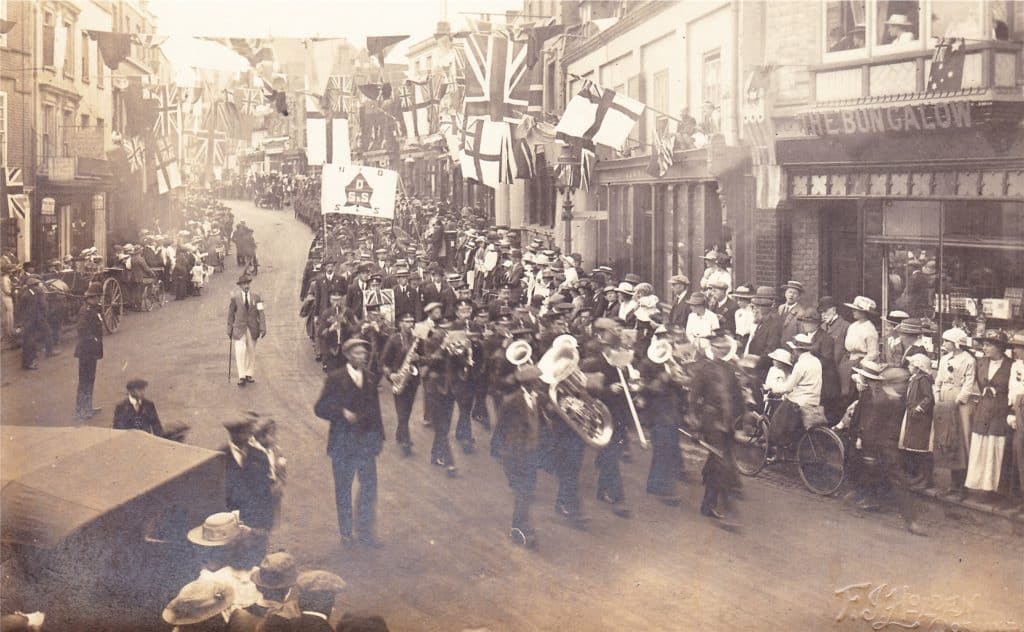
The following day children were given a half day off school. Fireworks were set off and people sang ‘Keep the Home Fires Burning’ around a bonfire outside the White Horse. On the first Sunday after the Armistice people flocked to local churches as vicars gave thanks.
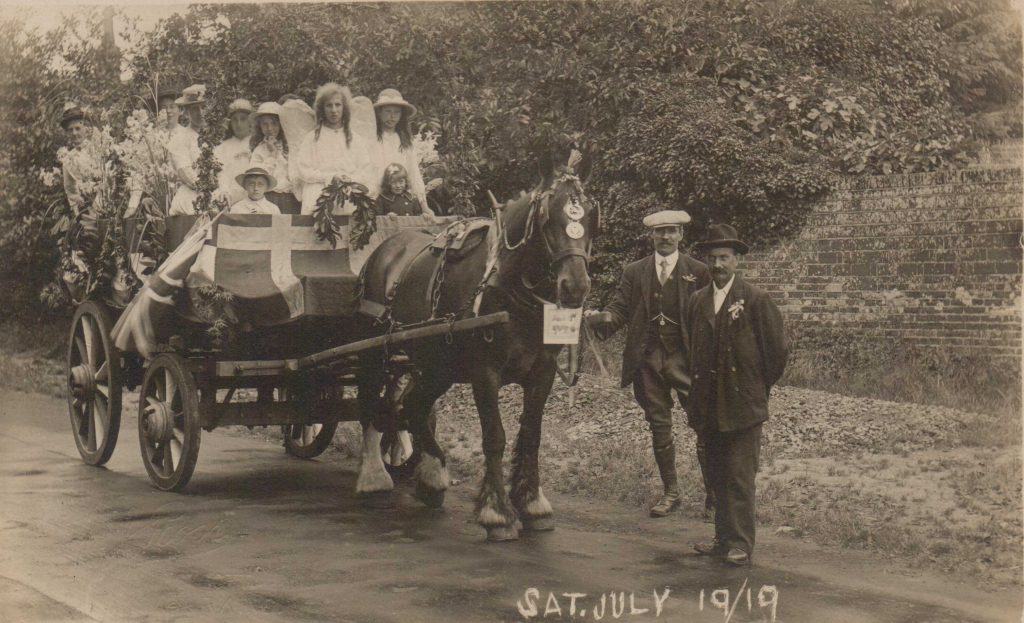
Formal celebrations did not take place until after the signing of the peace treaty at Versailles at the end of June 1919. On 17th July a procession of bands and decorated wagons made its way through streets hung with bunting and flags. A thanksgiving service, sports competition, children’s tea, and choral concert followed. Each village celebrated in its own way. In Capel over 100 local men who had served attended a ‘Welcome Home’ dinner, sitting down to roast beef and pork, salads, apple and blackberry tarts, jellies and blancmange, cheese and beer. Each man was presented with a silver token of the village’s gratitude.

‘How long we have lived in these four years,’ wrote the editor of the local paper.‘ So long in their intensity that it is only when we are able for a moment to put away the present and recall the old questions that stirred us in peace times, the old pleasures and hopes and grumblings, that we realise how altered everything is. This war has absorbed our energies and centred our thoughts. Even to talk of anything else has bored us. We have breathed it as an atmosphere, worked for it as a life purpose, sacrificed for it as a religion, and if called to give our best love have felt as if we were giving them to God. It has been unlike all other wars in the world’s history.’
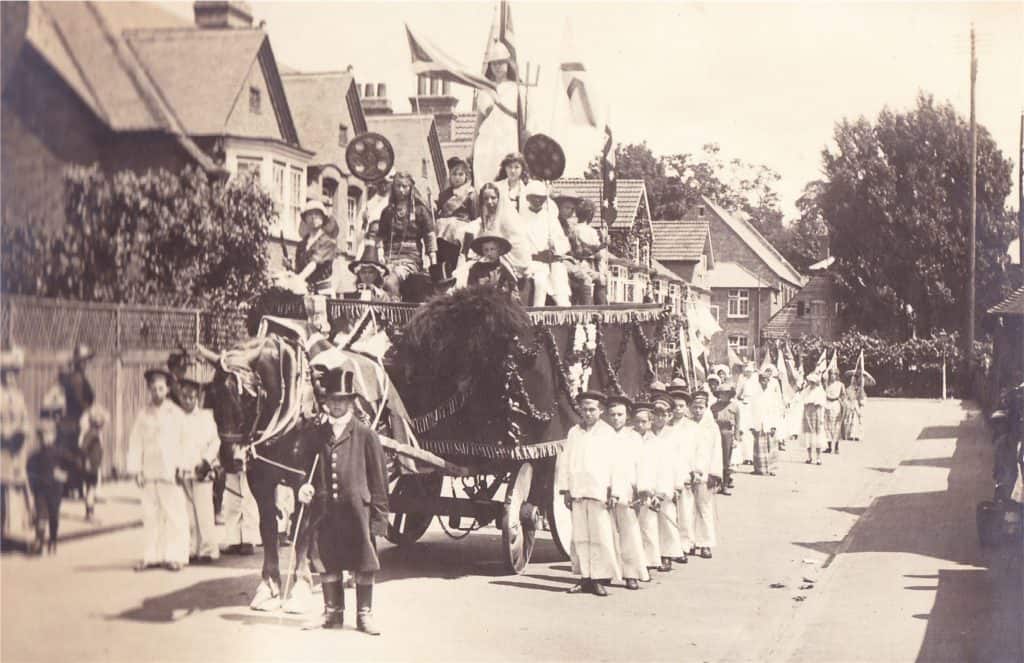
A wagon decorated for the Dorking peace celebrations of 17th July 1919. School children are dressed to represent Britannia, the Royal Navy, the home nations, and the colonies, re-affirming Britain’s place at the head of its Empire.
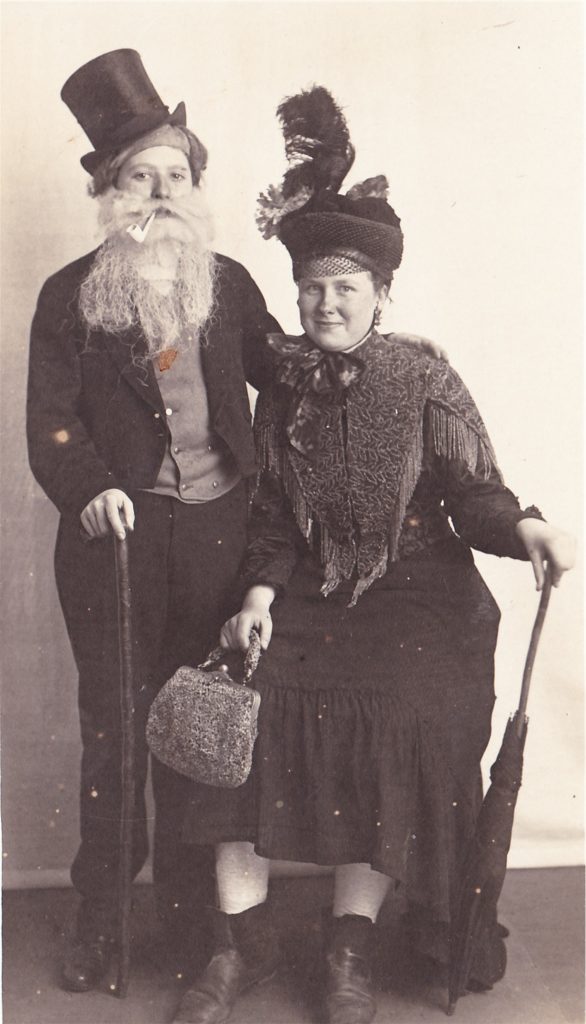
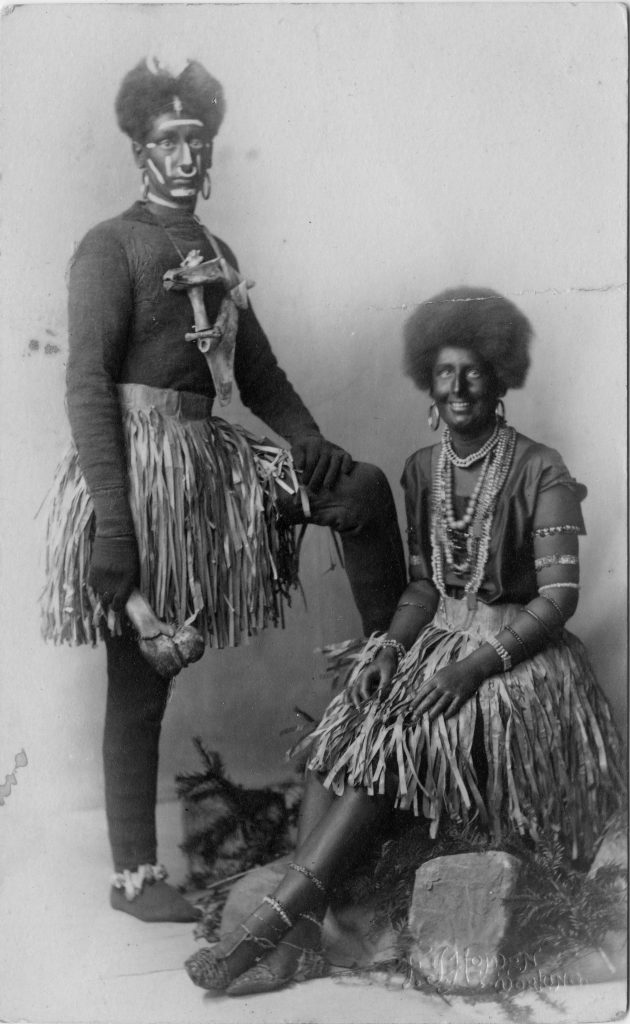
Reg and Ethel Betteridge and W Rich and K Browell dressed up for the peace celebrations. Fancy dress, cross-dressing and blacking up were a common feature of celebrations and parades.
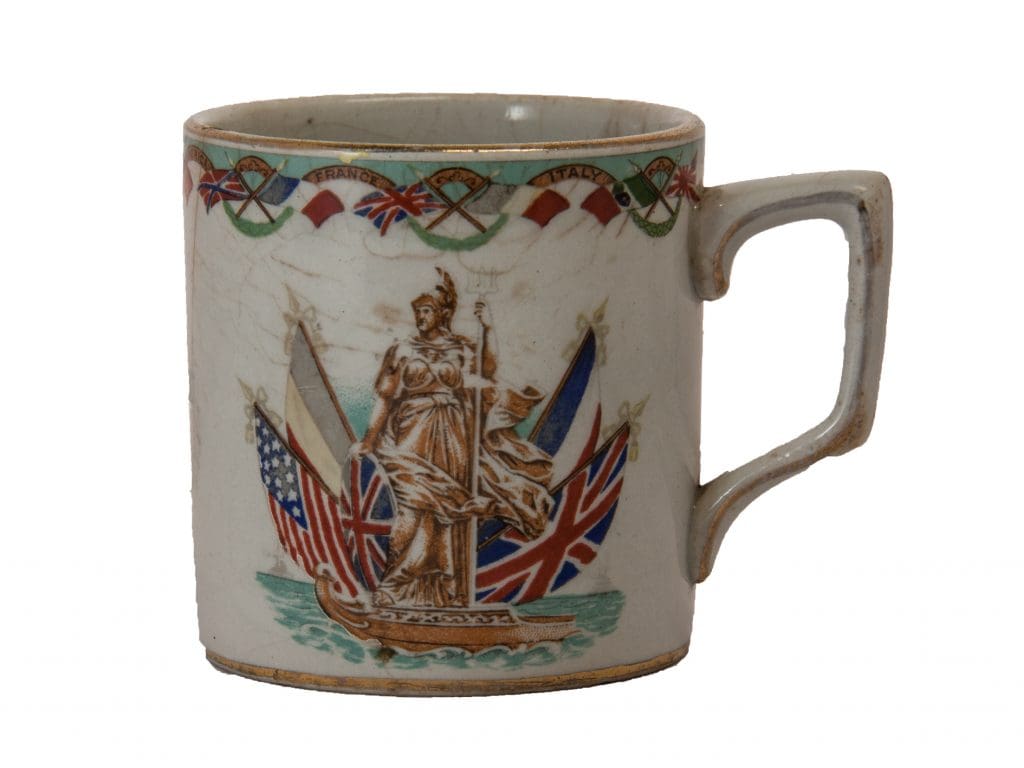
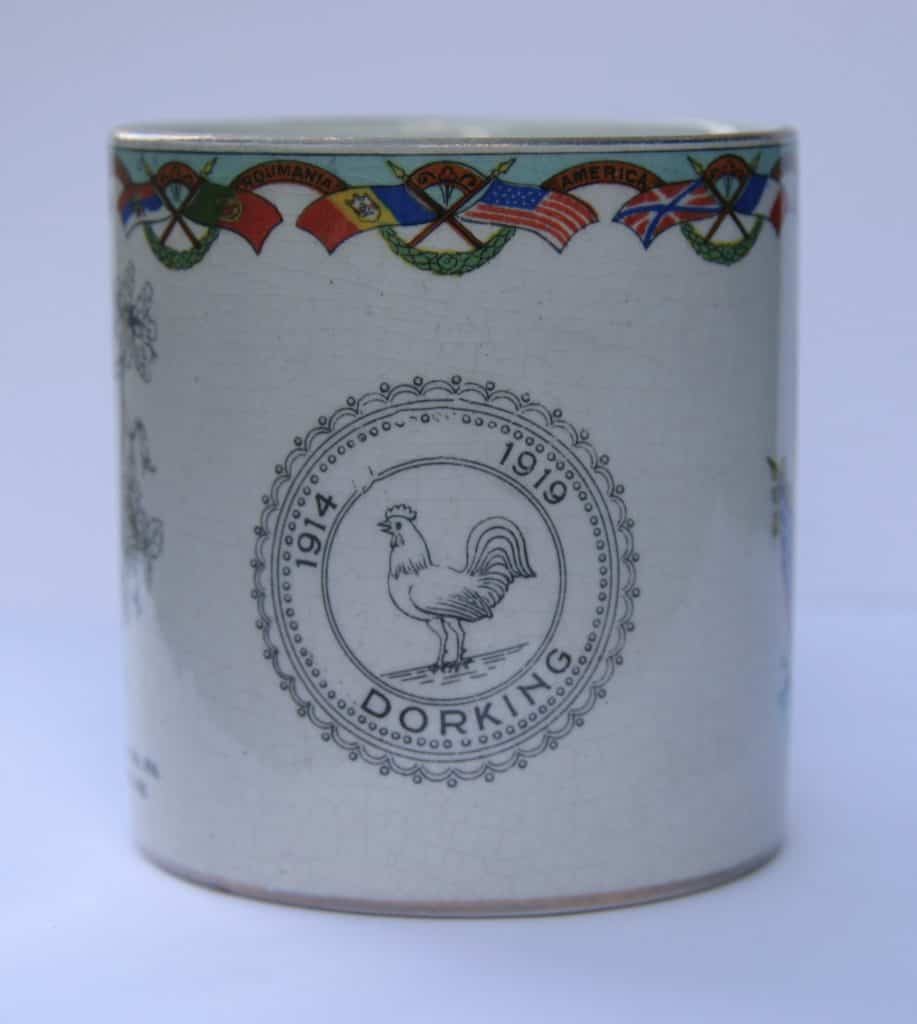
Mugs were commercially produced to celebrate the peace in 1919, with the name and logo of the relevant towns and villages stamped on the back. (Photograph reproduced with permission of Roy Williamson)
Next : Commemoration

